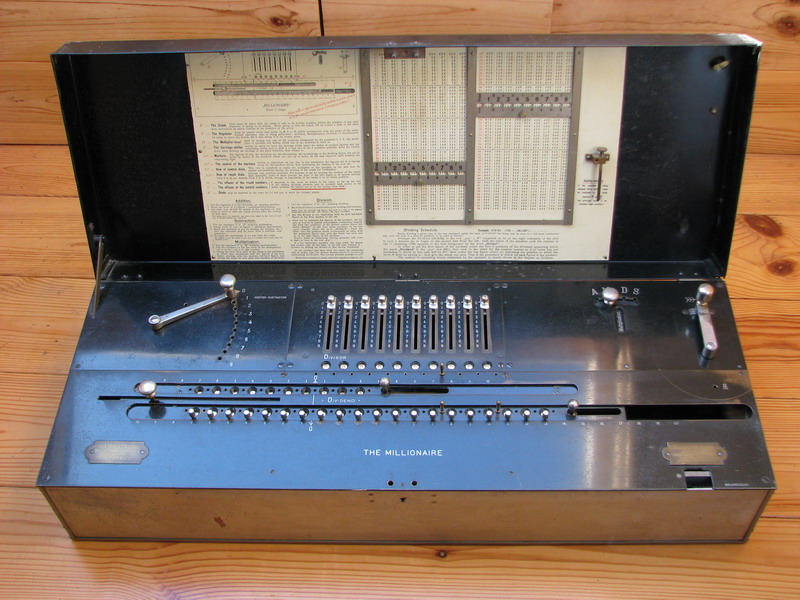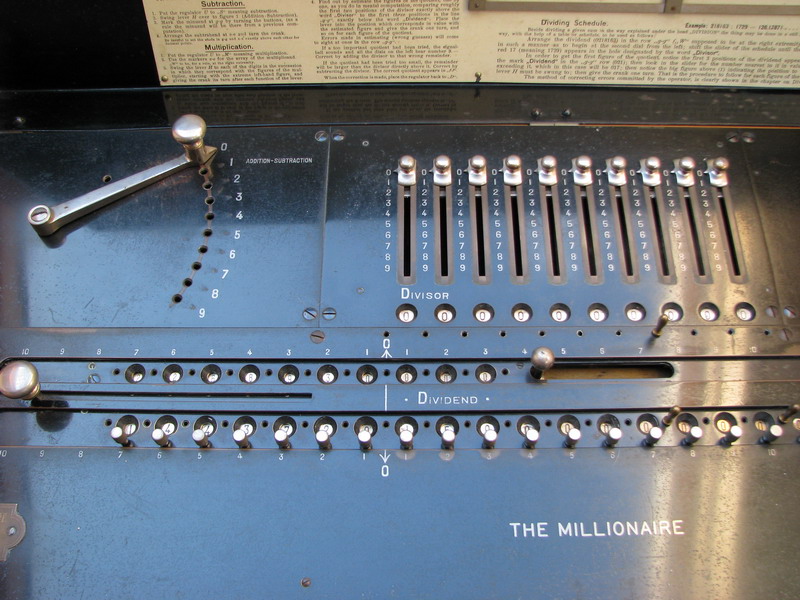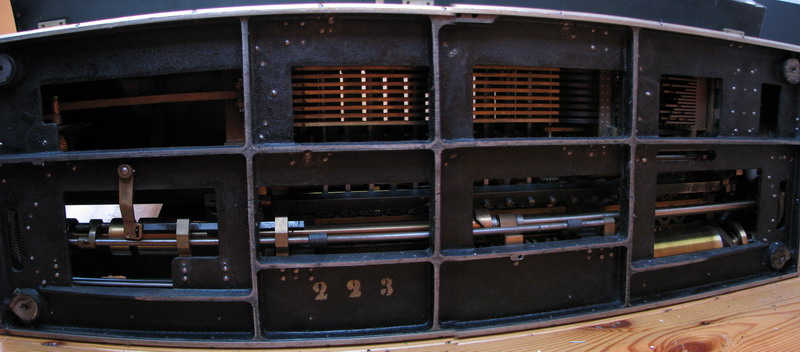
The Millionaire in this incarnation weighs approximately 34 kg, which is far over the weight limit for aircraft luggage. What I did was to disassemble the machine so far that the carriage (which is itself a sizeable chunk of metal) could be taken out. I put this in one suitcase, together with the metal covers of the machine, and the remainder of the machine in another suitcase, nicely filling out my luggage allowance. I flew back on the 24th of December, and remembered to add a note to the suitcase on the outisde of the bubble wrap that read "Dear airport security people, I know that you could only see a black rectangle on the x-ray scan. The machine is a mechanical calculator, that consists mainly of steel and brass. If you must unpack the bubble wrap to have a closer look, please repack the machine carefully, as it is very heavy and will be damaged if it is not well padded on all sides. Thank you!" When I arrived home and unpacked the suitcases, both had a TSA-slip in them to notify me that my luggage had been opened. On my note, one of the TSA employees had written "Rewrapped carefully - Merry Xmas!"


Some barbarian, for some reason, cut out the serial number from the steel top plate. Why is a complete mystery to me, the serial nr., 1515, is featured on many other places on the machine (with some effort, you can even see it stamped into the frame through the very hole created by cutting it out of the top plate!), so in order to make it unrecogniseable after being stolen it is of no use. Perhaps someone needed a stamped steel "N° 1515" for some reason ? We'll probably never know.
To show how the machine and its direct multiplication works, you'll find a video below of the multiplication of 0.3183098865 by pi, which gives the surface of the resulting circle as 1 (apart from rounding errors ...). Compare this video with the same calculation on the Brunsviga B page, and it will quickly be obvious why the Millionaire was not a huge selling success. Theoretically it is faster, but you have to swing around such an enormous mass on every turn of the crank (and the ten's carry mechanism, which involves a massive brass cylinder in the carriage, is largely responsible for this) that after working 8 hours a day with this machine for a month, you'll look like Popeye. First, we divide 1 by pi, to arrive at a result with 10 digit accuracy ...
...and then we check the result we obtained by multiplying it back with pi:
The fun thing about the aluminum cased (to save weight ?) Millionaires is that the bottom plate slides out, to reveal the mechanism.

The mechanical lookup table is clearly visible in the top right. How it works when calculating is visible in the following video
